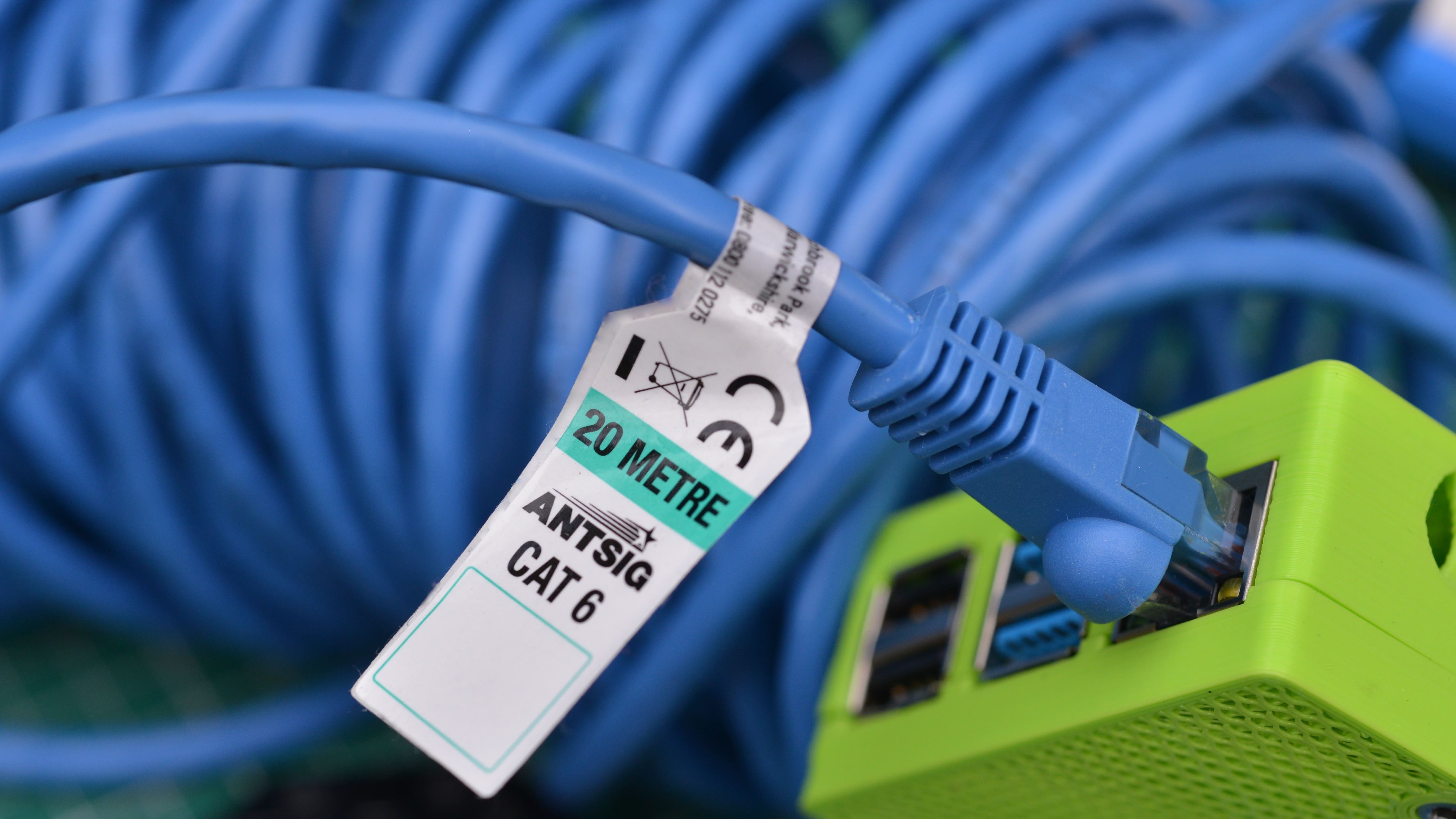Unveiling the Hidden Secrets of Network Cabling
Exploring the Key Techniques, Best Practices, and Insider Tips for Optimal Network Cabling Performance
Welcome to our comprehensive guide that delves into the fascinating world of network cabling, where we unlock the secrets that lie behind the scenes of seamless connectivity. In today's interconnected world, reliable and efficient network infrastructure plays a vital role in powering businesses, homes, and virtually every aspect of our lives. Behind the walls, ceilings, and floors, a labyrinth of cables forms the backbone of our digital ecosystem, enabling the swift and secure transmission of data.
Network cabling serves as the foundation for transmitting data and facilitating seamless communication within a network. It encompasses the physical infrastructure composed of various cables, connectors, and devices that interconnect computers, servers, switches, routers, and other network components. Simply put, network cabling refers to the process of installing, organizing, and managing the intricate network of cables that enable the transfer of information, whether it's in an office building, data centre, or even within the confines of a home network. These cables act as the lifelines of modern technology, carrying vast amounts of data, voice, and video signals, ensuring reliable connectivity and efficient data transfer across local area networks (LANs), wide area networks (WANs), and the Internet at large. By employing different types of cables and adhering to specific wiring standards, network cabling forms the backbone of our digital infrastructure, enabling us to access information, collaborate, and communicate with unparalleled speed and reliability.
The Most Used Technical Words:
 Ethernet:
Ethernet:
Ethernet is a widely used technology for wired local area networks (LANs). It defines a set of protocols and standards that govern the transmission of data over a network. Ethernet uses various types of cables, such as twisted pair or fibre optics, to carry data packets between devices. It provides a reliable and efficient means of communication within a network by using a system of addressing and data encapsulation.
Twisted pair:
Twisted pair cables are commonly used in Ethernet networks. They consist of pairs of insulated copper wires twisted together to reduce electromagnetic interference and crosstalk. Twisted pair cables come in different categories, such as Cat5e, Cat6, and Cat6a, each offering different levels of performance and bandwidth. These cables are terminated with RJ45 connectors and are capable of transmitting data over relatively short distances, typically up to 100 meters.
 Fibre optic:
Fibre optic:
Fibre optic cables use strands of glass or plastic to transmit data as pulses of light. They offer high-speed and long-distance transmission capabilities, making them ideal for high-bandwidth applications and long-haul connections. Fibre optic cables provide excellent data transmission quality, immunity to electromagnetic interference, and high security due to their resistance to tapping. They are commonly used in backbone networks, data centres, and telecommunications systems.
RJ45:
RJ45 refers to a standard connector used for terminating twisted pair cables, specifically those used in Ethernet networking. It is a modular connector with eight pins that align with the eight wires inside the cable. RJ45 connectors are widely used for connecting devices like computers, routers, switches, and IP phones to Ethernet networks. They enable reliable and secure connections by providing a standardized interface for data transmission.
Patch cable:
A patch cable, also known as a patch cord or Ethernet cable, is a short length of cable with connectors on both ends. It is used to establish temporary or permanent connections between network devices. Patch cables are typically made with twisted pair wires and terminated with RJ45 connectors. They are essential for connecting devices to network switches, patch panels, or directly to each other. Patch cables come in various lengths and are available in different categories, such as Cat5e, Cat6, and Cat6a, depending on the desired performance and bandwidth requirements.
These five components—Ethernet, twisted pair, fibre optic, RJ45, and patch cable—form the core elements of network cabling, providing the foundation for reliable, high-speed data transmission and connectivity in modern networks.
Starting with network cabling requires careful planning and adherence to industry standards. Here are the key steps to begin your network cabling journey:
-
Assess Requirements: Determine the scope and requirements of your network cabling project. Consider factors such as the size of the network, the number of devices to be connected, the desired data speeds, and any specific needs like voice or video transmission. This assessment will help you understand the type and quantity of cables, connectors, and other components needed.
-
Design the Network Topology: Create a network topology diagram that outlines the physical layout of the network. Identify the locations of network devices, such as switches, routers, and servers, as well as the pathways for running cables. Ensure that the design supports efficient data flow and allows for future scalability.
-
Select the Cable Type: Choose the appropriate cable type based on your requirements and budget. Twisted pair cables, such as Cat5e, Cat6, or Cat6a, are commonly used for Ethernet networks. Fibre optic cables offer higher speeds and longer distances but tend to be more expensive. Consider factors like bandwidth, transmission distance, and susceptibility to interference when selecting the cable type.
-
Plan Cable Routes: Determine the optimal paths for running the cables. Identify areas where cables can be concealed, such as through ceilings, walls, or cable conduits. Minimize cable lengths to reduce signal loss and avoid running them parallel to electrical lines or other sources of interference.
-
Prepare the Workspace: Before commencing the cabling installation, ensure that the work area is clean, organized, and equipped with the necessary tools and safety measures. This includes cable cutters, crimping tools, cable testers, labelling materials, and appropriate personal protective equipment (PPE) like gloves and safety goggles.
-
Install Cable Pathways: Begin by installing cable pathways, such as cable trays or conduits, to create a structured route for the cables. Secure the pathways properly, ensuring they comply with building codes and regulations. Pay attention to fire and safety requirements, especially when installing cables in plenum spaces or near potential hazards.
-
Cable Pulling: Carefully pull the cables through the designated pathways, ensuring they are not excessively stretched or bent beyond their specified bend radius. Use cable ties or Velcro straps to manage and secure the cables along the route, maintaining proper separation from power cables to minimize interference.
-
Terminate and Connect Cables: Terminate the cables by attaching appropriate connectors, such as RJ45 connectors for twisted pair cables or fibre optic connectors for fibre optic cables. Follow the specified wiring standards, typically TIA/EIA 568A or 568B for twisted pair cables. Use cable testers to verify proper termination and connectivity.
-
Label and Document: Label each cable and its corresponding connection point using clear and consistent labelling conventions. Document the cable routes, labelling details, and any other relevant information for future reference and troubleshooting purposes.
-
Test and Certify: After installation, thoroughly test the cabling infrastructure using cable testers or certification tools. This helps identify any wiring faults, such as miswires, open circuits, or excessive crosstalk. Certifying the cabling ensures it meets the required standards for optimal performance.
By following these steps, you can embark on your network cabling journey, ensuring a well-designed, properly installed, and reliable cabling infrastructure that supports efficient data transmission and connectivity within your network.
Best Practices for Network Cabling:
-
Plan and Document: Thoroughly plan your network cabling project and create detailed documentation of the network topology, cable routes, labelling schemes, and any specific requirements. This documentation serves as a valuable reference for future troubleshooting, expansions, or upgrades.
-
Follow Industry Standards: Adhere to recognized industry standards, such as TIA/EIA 568A or 568B for twisted pair cables, to ensure consistency and compatibility with networking equipment. Compliance with standards helps maintain signal integrity, reduces errors, and facilitates interoperability.
-
Use High-Quality Cabling and Components: Invest in high-quality cables, connectors, and other components from reputable manufacturers. Using inferior or substandard materials may result in performance issues, signal degradation, and network failures. Quality components ensure reliable and durable network connections.
-
Maintain Proper Cable Management: Implement effective cable management practices to organize and secure cables. Use cable ties, racks, trays, or other appropriate solutions to prevent cable tangling, minimize strain on connectors, and facilitate easy maintenance and future modifications.
-
Minimize Cable Lengths: Keep cable lengths as short as possible to reduce signal attenuation and interference. Excessive cable lengths can lead to signal degradation and lower data transfer speeds. Plan cable routes strategically to minimize unnecessary lengths and maintain optimal performance.
-
Separate Cables from Power Lines: Keep network cables separated from electrical power lines to minimize electromagnetic interference (EMI) and ensure signal integrity. Crossing or running parallel to power lines can introduce noise and disrupt data transmission.
-
Test and Certify Cabling: Perform thorough testing using cable testers or certification tools to verify the performance and compliance of installed cables. Testing helps identify any wiring faults, signal loss, or crosstalk issues. Certifying the cabling ensures it meets industry standards and guarantees reliable performance.
-
Label Cables and Connection Points: Label each cable and its corresponding connection point clearly and consistently. Proper labelling simplifies troubleshooting, maintenance, and future expansions. Use colour-coding or standardized labelling schemes for quick identification.
-
Implement Cable Protection: Protect cables from physical damage by using appropriate conduits, raceways, or protective covers. Avoid sharp bends or crimping that could affect cable performance. Secure cables to prevent accidental disconnections or damage due to movement or environmental factors.
-
Regularly Inspect and Maintain: Conduct regular inspections of the cabling infrastructure to identify any signs of wear, damage, or degradation. Perform routine maintenance, such as cleaning connectors and removing dust or debris. Address any issues promptly to ensure uninterrupted network connectivity.
By following these best practices, you can create a robust and reliable network cabling infrastructure that supports optimal performance, scalability, and ease of maintenance. These practices help ensure efficient data transmission, minimize downtime, and provide a solid foundation for your network infrastructure.
We understand that the world of network cabling can seem overwhelming, with its technical intricacies and numerous considerations. However, fear not, as Gemini Security Solutions is here to guide you every step of the way. Our team of experienced professionals is well-versed in network cabling practices and can provide expert advice and assistance to ensure your cabling project is a success. Whether you're setting up a small office network or undertaking a large-scale data centre deployment, we have the knowledge and expertise to simplify the process and help you achieve optimal results. With Gemini Security Solutions by your side, you can navigate the complexities of network cabling with confidence, knowing that you have a trusted partner dedicated to delivering reliable, efficient, and secure connectivity solutions. So contact us and let's start building a fast and reliable network.















